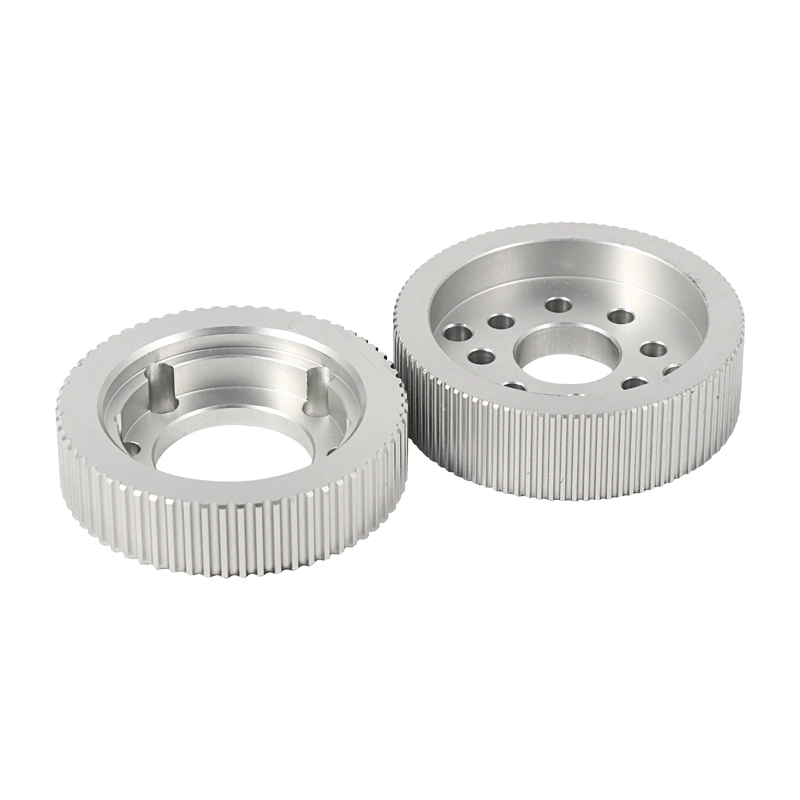HTD Pulley in Broadcasting Equipment
The Evolution of HTD Pulleys in Broadcasting
The development of HTD (High Torque Drive) pulleys has significantly influenced broadcasting equipment. From their inception, these pulleys have provided reliable and efficient power transmission that is crucial in maintaining the precision of broadcasting devices.
Understanding HTD Pulley Mechanics
HTD pulleys are designed with a specific tooth profile that ensures a higher torque transmission capacity. This unique design minimizes slippage and maximizes efficiency, which is essential in the demanding environment of broadcasting.
Material Composition of HTD Pulleys
HTD pulleys are typically constructed from durable materials such as aluminum, steel, or reinforced plastics. These materials provide the necessary strength and longevity required to withstand the rigorous conditions of broadcasting operations.
Application of HTD Pulleys in Broadcasting Equipment
One of the primary applications of HTD pulleys in broadcasting is in the synchronization of various mechanical components. For example, they are used in cameras, lighting rigs, and automated stage equipment to ensure precise movements and timing.

Advantages of HTD Pulleys in Broadcasting
The use of HTD pulleys brings several benefits, including reduced maintenance, enhanced reliability, and improved operational efficiency. These advantages are critical in broadcasting, where equipment failure can lead to downtime and lost revenue.
Comparing HTD Pulleys with Traditional Pulleys
Compared to traditional pulleys, HTD pulleys offer superior performance in terms of torque transmission and operational smoothness. This makes them the preferred choice in high-stakes broadcasting environments.
Installation and Maintenance of HTD Pulleys
Proper installation and regular maintenance of HTD pulleys are crucial to ensure their optimal performance. The process involves aligning the pulleys correctly and ensuring that the belts are tensioned appropriately.
HTD Pulleys in Modern Broadcasting Studios
Modern broadcasting studios rely heavily on HTD pulleys for various automated functions. These pulleys enable precise control over camera movements, lighting adjustments, and other critical operations.
Future Trends in HTD Pulley Technology
The future of HTD pulley technology looks promising, with ongoing advancements aimed at enhancing their efficiency and durability. Innovations such as the integration of smart sensors and materials with higher strength-to-weight ratios are expected to drive this evolution.
Case Studies: Successful Implementation of HTD Pulleys
Several broadcasting companies have successfully implemented HTD pulleys to improve their operational efficiency. These case studies highlight the tangible benefits of adopting HTD pulley technology in real-world scenarios.
Common Issues and Troubleshooting Tips
Despite their robustness, HTD pulleys can encounter issues such as misalignment or wear. Understanding common problems and their solutions can help in maintaining the longevity and performance of these pulleys.
Customizing HTD Pulleys for Specific Requirements
Many manufacturers offer customization options for HTD pulleys to meet specific requirements. Customization can involve altering the size, material, or tooth profile to better suit the intended application.
Environmental Impact of HTD Pulleys
The production and disposal of HTD pulleys have environmental implications. Manufacturers are increasingly adopting eco-friendly materials and processes to reduce their environmental footprint.
Economic Benefits of Using HTD Pulleys
Investing in HTD pulleys can lead to significant cost savings in the long run. Their durability and efficiency reduce the need for frequent replacements and maintenance, thereby lowering operational costs.
HTD Pulleys in Mobile Broadcasting Units
Mobile broadcasting units, such as outside broadcast (OB) vans, extensively use HTD pulleys to manage various mechanical functions. These pulleys ensure that equipment operates smoothly even in dynamic environments.
Innovations in HTD Pulley Design
Recent innovations in HTD pulley design focus on enhancing their performance and reliability. These innovations include the use of hybrid materials and advanced manufacturing techniques.

Safety Considerations When Using HTD Pulleys
Safety is paramount when using HTD pulleys in broadcasting equipment. Proper installation, regular inspections, and adherence to safety protocols can prevent accidents and equipment damage.
Training and Skill Development for Operating HTD Pulleys
Training programs for technicians and engineers are essential to ensure the correct operation and maintenance of HTD pulleys. Skill development initiatives can enhance the overall efficiency and safety of broadcasting operations.
HTD Pulleys in Automated Broadcasting Systems
Automated broadcasting systems rely on HTD pulleys for various synchronized operations. These pulleys facilitate the seamless integration of different mechanical components, enhancing the overall efficiency of the system.
User Testimonials and Feedback
Feedback from users of HTD pulleys in the broadcasting industry underscores their reliability and performance. Testimonials highlight how these pulleys have contributed to improved operational efficiency and reduced downtime.
Cost Analysis of HTD Pulleys
A comprehensive cost analysis of HTD pulleys reveals their long-term economic benefits. While the initial investment may be higher, the reduced maintenance and replacement costs offer significant savings.
HTD Pulleys in Robotic Broadcasting Equipment
Robotic broadcasting equipment, such as camera robots, utilize HTD pulleys for precise movements and stability. These pulleys ensure that the robots operate smoothly and accurately during live broadcasts.
Integration of HTD Pulleys with Digital Systems
The integration of HTD pulleys with digital control systems is becoming increasingly common. This integration allows for real-time monitoring and adjustments, enhancing the overall performance of broadcasting equipment.
Global Market Trends for HTD Pulleys
The global market for HTD pulleys is expanding, driven by the growing demand for efficient and reliable power transmission solutions in various industries, including broadcasting.
Future Challenges and Opportunities
While the future of HTD pulleys looks promising, there are challenges and opportunities that need to be addressed. These include developing more sustainable materials and enhancing their performance to meet evolving industry needs.
Company Introduction and Product Promotion
Our company is a leading player in the Chinese pulley market, specializing in the production of HTD pulleys, plastic pulleys, timing pulleys, belt idler pulleys, belt pulleys, V pulleys, compound pulleys, and heavy-duty pulleys. With over 300 sets of fully automated CNC production equipment and fully automated assembly equipment, we ensure high-quality products at competitive prices. Our commitment to excellence and customer satisfaction sets us apart in the industry. We welcome customers to provide drawings or samples for custom orders.

Author: Czh.